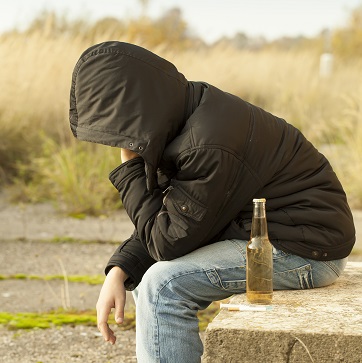Research studies in the area of substance abuse often lead to new strategies for treatment, or the tossing out of treatments that are proven ineffective. Research is also used to show how trends in the use of certain substances change over time, or among different segments of the population. Public policy requires information that accurately reflects the trends in substance use in order to establish laws and regulations that discourage substance abuse. A study illustrates the inaccuracies that plague state reporting agencies when determining the cause of death in a traffic accident.
According to the study by National Institute on Alcohol Abuse and Alcoholism (NIAAA) researchers there were more than 450,000 U.S. traffic deaths between 1999 and 2009. In many of these cases alcohol was involved but was not referenced on the death certificates as cause of death. While correct causes of death on death certificates may seem trivial, injuries remain the leading cause of death in the U.S. for individuals under the age of 45, according to the Centers for Disease Control and Prevention.
Importance Of Understanding Alcohol’s Role In Car Accidents
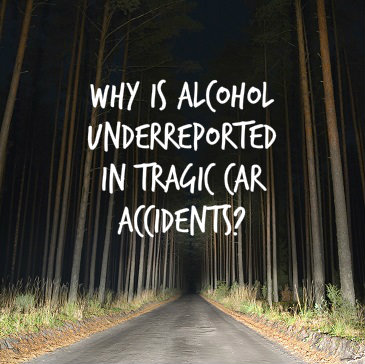 Study leader Ralph Hingson, Sc.D. of the NIAAA stresses the importance of having a clear understanding of alcohol’s role in the leading cause of death for an age group. Only with correct information can officials determine whether policies aimed at reducing alcohol-related deaths are effective. The size of the problem must be measured, tracked and then assessed in order to best create prevention and intervention measures.
Study leader Ralph Hingson, Sc.D. of the NIAAA stresses the importance of having a clear understanding of alcohol’s role in the leading cause of death for an age group. Only with correct information can officials determine whether policies aimed at reducing alcohol-related deaths are effective. The size of the problem must be measured, tracked and then assessed in order to best create prevention and intervention measures.
The researchers started by looking at all traffic deaths because the records are more accurate when compared with other types of accidental death. In approximately half of all U.S. states there is a requirement that the fatally injured driver be tested for blood alcohol levels. This information is then entered into the National Highway Traffic Safety Administration’s Fatality Analysis Reporting System database. The database results were then compared with death certificates from across the U.S.
The researchers found that the role of alcohol in traffic deaths in the decade studied was significantly underreported. Only three percent of the death certificates listed alcohol as a contributing cause of death, while the database rated 21 percent of deaths as legally drunk.
States Reporting Alcohol In Accidents Differs – Importance Of Best Practices
The findings were not consistent from state to state. In some states alcohol was rarely included on death certificate information, such as in Maryland, New Hampshire, Nevada and New Jersey. Other states, including Iowa, Minnesota, Kansas and Delaware, were better about accurately reporting alcohol’s role in the death.
The researchers noted that the discrepancy in reporting could be due to long waiting periods for receiving blood alcohol level test results. In most cases a coroner or medical examiner is required to file a death certificate within three to five days, which may be sooner than a toxicology report can be received.
The researchers stressed the importance of determining which practices are followed by states that seem to be reporting more accurately. Establishing best practices for other states to follow may make reporting on traffic fatalities involving alcohol more accurate.
Having laws in place requiring alcohol testing did not seem to result in better reporting. However, Hingson says that the results illustrate the wide gap between the number of accidental deaths related to alcohol consumption and those that are reported.
Millions of cigarette smokers across the U.S. are addicted to nicotine, a natural ingredient in tobacco capable of producing harmful, long-term changes in brain chemistry just like a range of other legal and illegal substances of abuse. In most cases, people who attempt to quit smoking do so without the help of an addiction specialist or any other health professional prepared to deal with nicotine addiction. In a study published in March 2014 in the journal Addiction, a team of British and Dutch researchers assessed the likelihood that smokers addicted to nicotine will successfully quit using cigarettes without professional help.
The Basics Of Nicotine Addiction
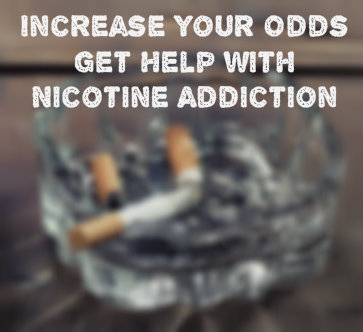 Nicotine addiction is related to a nicotine-induced chemical imbalance in the area of the brain responsible for producing pleasurable responses to various activities. This imbalance activates the pleasure center and gives a smoker an incentive to introduce nicotine into the brain again and again over time. This incentive is heightened by the fact that any single episode of nicotine exposure only briefly produces its pleasurable effects. Over 40 million American adults smoke cigarettes; since most habitual smokers are nicotine addicts, nicotine addiction constitutes the most widespread form of substance addiction in the U.S. More than two-thirds of the people who smoke cigarettes want to quit, according to figures compiled by the federal Centers for Disease Control and Prevention.
Nicotine addiction is related to a nicotine-induced chemical imbalance in the area of the brain responsible for producing pleasurable responses to various activities. This imbalance activates the pleasure center and gives a smoker an incentive to introduce nicotine into the brain again and again over time. This incentive is heightened by the fact that any single episode of nicotine exposure only briefly produces its pleasurable effects. Over 40 million American adults smoke cigarettes; since most habitual smokers are nicotine addicts, nicotine addiction constitutes the most widespread form of substance addiction in the U.S. More than two-thirds of the people who smoke cigarettes want to quit, according to figures compiled by the federal Centers for Disease Control and Prevention.
Smoking Cessation Techniques
The main smoking cessation technique available to a cigarette user who does not seek professional assistance is non-prescription nicotine replacement therapy. This approach relies on the use of over-the-counter nicotine-containing gum, lozenges or patches to gradually reduce an individual’s dependence on nicotine and help him or her avoid the unpleasant symptoms of nicotine withdrawal (which commonly act as a strong deterrent to smoking cessation efforts). Techniques used under the guidance of an addiction specialist or some other form of health professional include prescription nicotine replacement therapy (nasal sprays, inhalers or patches) and prescription nicotine-free medications such as varenicline (Chantix) or buproprion (Zyban), as well as forms of counseling that include short training and motivational sessions called brief interventions, longer group or individualized counseling sessions, remote counseling sessions that rely on phone or Internet technology and a form of in-person practical training called behavioral therapy. As a rule, a combination of professionally administered medication and counseling produces results that are superior to an all-medication or an all-counseling approach.
Chances Of Quitting Success
In the study published in Addiction, researchers from University College London and the Maastricht University Medical Centre used information gathered from a large-scale survey project called the Smoking Toolkit Study to compare the chances of smoking cessation success among people who make their own efforts to the chances of success among people who seek professional help. All told, data was collected from 10,335 smoking adults in England who had tried to stop using cigarettes one time or more in the year prior to the survey. The researchers broke these individuals down into four groups: people who received both professionally administered counseling and medication while trying to quit, people who only received professionally administered medication while trying to quit, people who tried to quit on their own with non-prescription nicotine replacement products and people who tried to quit on their own without using non-prescription nicotine replacement.
The researchers concluded that, compared to smokers who try to quit on their own without nicotine replacement products, smokers who try to quit while receiving professionally administered counseling and medication successfully stop smoking more than three times as often. Smokers who try to quit while only receiving prescription medication successfully stop smoking over 1.5 times more often than smokers who quit on their own without nicotine replacement products. Smokers who quit while only using non-prescription nicotine replacement successfully stop smoking about 0.96 times more often than those individuals who try to stop without any form of non-prescription medication or professional help.
The authors of the study published in Addiction note that, while there is some difference in the rates of smoking cessation success for people who only use over-the-counter nicotine replacement and people who use no assistance at all, the results in these two groups are close enough to qualify as “similar.” In contrast, people who receive a combination of counseling and prescription medication or just prescription medication clearly have improved odds of successfully quitting smoking.
14 Apr 2014
Is The ‘War On Drugs’ Nearing The End?
It’s been more than 40 years since the “war on drugs” became a popular term across the United States. Yet, arguably, the U.S. has taken a combative approach to drug use for much longer than that, beginning with the passing of the Harrison Act in 1914. This war on drugs has involved the total prohibition of many drugs, and the criminalization of drug use and addiction. However, there have been signs in the last several years that the prohibition-and-penalty approach to curbing drug use is starting to fall out of favor.
The Harrison Act
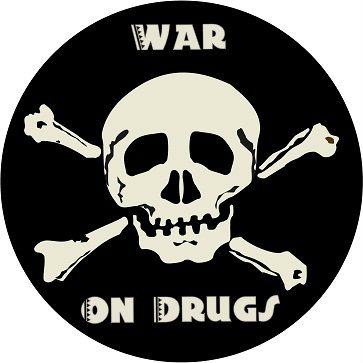 The Harrison Narcotics Tax Act of 1914 made it illegal to sell opiates or cocaine without a license. On the surface, the new law appeared to be about the moderate regulation and taxation of narcotics, rather than about outlawing them. However, the effect was to make it impossible to legally obtain cocaine or opiates. From this time on, drug users were forced to obtain their substance of choice on the black market.
The Harrison Narcotics Tax Act of 1914 made it illegal to sell opiates or cocaine without a license. On the surface, the new law appeared to be about the moderate regulation and taxation of narcotics, rather than about outlawing them. However, the effect was to make it impossible to legally obtain cocaine or opiates. From this time on, drug users were forced to obtain their substance of choice on the black market.
In theory, the language of the Harrison Act permitted doctors to prescribe narcotics. However, they were only permitted to prescribed narcotics “in the course of [their] professional practice,” which meant that they could only prescribe them to patients for treatment purposes. This language became key, because addiction was not seen as a disease at this time. As a result, prescribing narcotics to an addict was seen as illegal, because such a person was not ill.
Various other prohibition laws were passed in the succeeding years regulating substances like stimulants, steroids, hallucinogens and depressants. In 1970, all of these various laws were consolidated into a single piece of legislation that classified all legally controlled substances into various categories: the Comprehensive Drug Abuse Prevention and Control Act.
The Height Of The ‘War On Drugs’
When he created the Drug Enforcement Administration (DEA) in 1973, Richard Nixon declared “an all-out global war on the drug menace.” The phrase “war on drugs” caught on around the country and around the world as a result of this reference.
Heroin use increased rapidly in the 1960s and ’70s during the war in Vietnam, and public outcry against the drug became intense. Public pressure to curb illegal drug use, especially heroin, was at its height. There was a great deal of pressure on the government to do something to reduce drug use and the crime that was often associated with it.
The rise of the war on drugs was more than just the spreading of a catchy phrase. It marked a change in U.S. domestic policy away from treating addicts as patients and trying to solve the “root causes” of crime (such as poverty, racism, etc.) and toward a punitive approach to drug use that treated addicts as criminals. The Nixon Administration was one of the last presidential administrations to spend more money on the treatment and prevention of drug use than on the prosecution and incarceration of drug users.
In 1986, President Reagan signed the Anti-Drug Abuse Act, which created 29 mandatory minimum sentences for drug-related offenses. The percentage of the U.S. population in prison had hovered between 1 percent and2 percent since 1920, but jumped up to 8 percent between 1980 and 2008.
Signs Of A Shift In Drug Policy
Over the last two decades in particular, more and more prominent people and organizations have condemned the war approach to drug use as ineffective, expensive and unjustly punitive. Lately there have been signs that state and national policies are starting to concede to this viewpoint.
Two clear examples are the recent votes to legalize recreational marijuana in Colorado and Washington. Legal sales have begun in Colorado, and should begin in Washington by the end of 2014. Although marijuana remains a Schedule 1 controlled substance under federal law, the federal government has decided not to challenge marijuana sales in these two states. Furthermore, marijuana legalization is scheduled to appear on more state and city ballots around the country in upcoming elections.
Meanwhile, legislation on the federal level is starting to reduce the number of people in prison for drug offences. Many people hit by mandatory minimums or other harsh sentences have had their time in prison reduced by the current administration, and the United States Sentencing Commission is working to reduce even more sentences.
So far, these are relatively modest changes to the national drug policy. Nevertheless, critics of the war on drugs are encouraged by these signs that the prohibition and punishment approach that has dominated the way the U.S. combats drug abuse may finally be falling out of favor.
08 Apr 2014
Chronic Heroin Use Is On The Rise
Heroin is perhaps the most widely known opioid narcotic drug of abuse. In addition to opioid addiction, chronic users of this drug typically face a range of serious and potentially fatal health problems. In a report presented in March 2014 to the White House Office of National Drug Control Policy, a team of researchers from the RAND Corporation estimated how many people in the U.S. qualified as chronic heroin users in the years between 2000 and 2010. This report includes detailed information on the levels of drug intake found among chronic users.
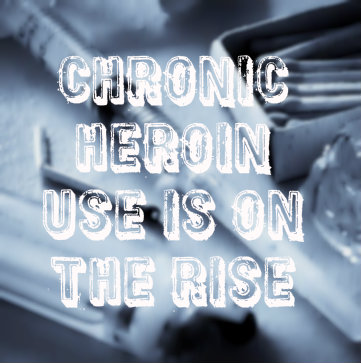 What Is Considered Chronic Use?
What Is Considered Chronic Use?
The federal Substance Abuse and Mental Health Services uses data from a yearly undertaking called the National Survey on Drug Use and Health to estimate how many Americans age 12 or older use heroin to any extent in the average month. The latest findings from this survey were released in the fall of 2013 and contain information compiled for most of 2012 and a short segment of 2011. According to these findings, roughly 335,000 adults and teenagers took heroin at least once in a representative 30-day timeframe. Altogether, about double that amount (669,000) took the drug at least once during the yearlong survey period. The figures for monthly heroin use were higher in 2012 than at any point since 2006. The figures for yearly use were higher in that year than for any year in the previous decade.
The Levels Of Chronic Heroin Use
Chronic drug use is a descriptive and useful but fairly imprecise term. Some chronic users may take a given drug four to 10 times a month, while others may have a more accelerated pattern of intake and take a drug 11 to 20 days per month. Still other chronic users may have heavily accelerated patterns of intake and take a given drug 21 days or more per month. As a rule, repeated use of an addictive substance is highly associated with chances for abusing that substance and developing the symptoms of drug addiction. For this reason, chronic users account for the vast majority of people directly affected by abuse- and addiction-related problems. Heroin is particularly noted for its potential to trigger abuse and addiction in repeated users. Users of the drug who develop these problems qualify for diagnosis of a condition officially known as opioid use disorder.
How Many Chronic Heroin Users Are There?
In the report presented to the White House Office of National Drug Control Policy, the RAND Corporation researchers calculated the number of chronic heroin users in the U.S. with information gathered from several highly regarded sources, including the federally sponsored National Survey on Drug Use and Health and Arrestee Drug Abuse Monitoring Program. This information covers the timeframe between the years 2000 and 2010. In 2010, the probable number of chronic heroin users hovered at about 1.5 million. Less likely numbers included a low estimate of 800,000 chronic users and a high estimate of 2.6 million chronic users. The number of chronic heroin users calculated by the RAND Corporation researchers is much higher than the total number of heroin users identified by the National Survey on Drug Use and Health. This is largely attributable to the researchers’ inclusion of information from the Arrestee Drug Abuse Monitoring Program, which covers a large pool of people (the arrested and the imprisoned) affected by an uncommonly high rate of substance use.
Roughly 300,000 of the individuals identified by the researchers as chronic heroin users took the drug four to 10 days per month. Another 200,000 identified individuals took the drug 11 to 20 days per month. Two-thirds (1 million) of those identified as chronic heroin users took the drug 21 days or more per month.
The authors of the report presented to the White House Office of National Drug Policy note that it’s fairly difficult to accurately estimate the number of people affected by chronic heroin use. This is due, in large part, to the problems involved in tracking the relatively small segment of the total population that takes the drug. On an important note, the data used by the report’s authors did not extend into 2011, 2012 and 2013. Figures from the National Survey on Drug Use point toward a sharp increase in overall heroin use during 2011 and 2012 (as of early 2014, figures for 2013 have not been released).
Find Out About Naloxone – A Potential Lifesaver For Heroin Addicts
Homelessness is a socioeconomic condition that directly affects well over a million Americans in any given year. For a number of reasons, homeless people are significantly more likely than the rest of the population to develop serious problems with substance abuse or addiction. In a study published in September 2013 in the journal Addiction, researchers from the RAND Corporation examined the types of social connections that help define the ways in which homeless teenagers and young adults use or abuse drugs or alcohol.
Homelessness Statistics
No one really knows how many people in America are homeless at any particular point in time. However, according to recent figures compiled by the federal Substance Abuse and Mental Health Services Administration (SAMHSA), on a representative day in 2010, at least 400,000 individuals in the U.S. didn’t have a fixed home address and either lived on the streets or in some sort of shelter or temporary housing. In a 12-month period that overlapped parts of both 2009 and 2010, more than 1.5 million people qualified as homeless. Some homeless people only lack permanent housing for relatively short amounts of time; however, on a typical day, more than 100,000 Americans lack permanent housing on a long-term basis.
Who Makes Up For Most Of The Homelessness In America?
In the U.S., men and boys experience homelessness almost twice as often as girls and women. Almost 22 percent of all homeless Americans are children or teenagers below the age of 18. Young adults between the ages of 18 and 30 make up another 23.5 percent of the U.S. homeless population. However, adults between the ages of 31 and 50 have the highest overall rate of homelessness. In descending order, the three American ethnic groups most likely to experience homelessness are non-Hispanic whites, African-Americans and Hispanic whites.
Homelessness And Substance Abuse
Current estimates indicate that as many as 50 percent of all long-term homeless Americans are affected by serious problems with substance abuse or substance addiction. When rates for drug- or alcohol-related issues in time periods before or after homelessness are taken into account, this figure rises to more than 80 percent. In many cases, problems with substance abuse or addiction appear before homelessness occurs and contribute to the changing life circumstances that cause an affected individual to lose his or her attachments to a permanent home. However, in other cases, the difficulties of homelessness contribute to the onset of excessive, dysfunctional drug or alcohol consumption. Mental illness is also a frequent contributor to the declining life circumstances of homeless people.
Social Connections Important Regarding Drug Use
In the study published in Addiction, the RAND Corporation researchers sought to identify the people who are most likely to participate in drug or alcohol use with homeless teenagers and young adults. They conducted their work with the help of 419 homeless people between the ages of 13 and 24 from the greater Los Angeles area. Each of these individuals was asked to name 20 people whom they interacted with socially. In addition, the participants were asked to detail their 20 social contacts’ relevant background information and level of involvement with drug or alcohol use.
After examining their data, the researchers concluded that, in descending order, homeless youths are most likely to engage in alcohol use with their intimate sexual partners and people in their social circles who use drugs, engage in dangerous sexual practices, act as opinion formers, provide some sort of physical or emotional support, and have popular social standing. They also concluded that, in descending order, homeless youths are most likely to engage in drug use with their intimate sexual partners and people in their social circles who drink alcohol, engage in dangerous sexual practices, act as opinion formers, provide physical or emotional support, and have popular social standing.
The Significance Of Homelessness And Substance Abuse
Based on their findings, the authors of the study concluded that homeless teenagers and young adults tend to share drug and alcohol use with peers who have more than one clear risk for substantial problems with health or well-being, as well as with peers who in some way dominate or determine the ways in which they view and interact with the world. The authors believe that public health officials and abuse/addiction specialists can use this information as the basis for improved efforts to reach homeless youths affected by substance use/abuse and reduce their chances of developing or continuing dangerous patterns of drug or alcohol intake.
Read About How Volunteering Can Aid Your Own Recovery
Police officers are often the first medical responders on the scene of drug-related overdose emergencies. A new study published online in the journal Drug and Alcohol Dependence shows that the preparedness of police officers when responding to an overdose could affect the outcomes for the individual as well as the community.
The study focused on areas of Rhode Island and Connecticut that have been experiencing growing numbers of prescription opioid overdose emergencies. Many of these were relatively sparsely populated suburban and rural areas, where emergency medical technicians (EMTs) and paramedics are a more limited resource. In these areas, police officers are more likely to be first medical responders than in areas with more hospitals and associated emergency medical personnel.
Traci C. Green, Ph.D., a research scientist at the department of emergency medicine for Rhode Island Hospital, was the lead investigator for the new study. Green and her fellow researchers conducted interviews with law enforcement officers. The interviews included questions about personal attitudes toward drug users and victims of overdoses, as well as questions about the resources and protocol for police officers who are the first responders to the scene of an overdose.
Study Finds Frustration And Confusion Among Law Enforcement
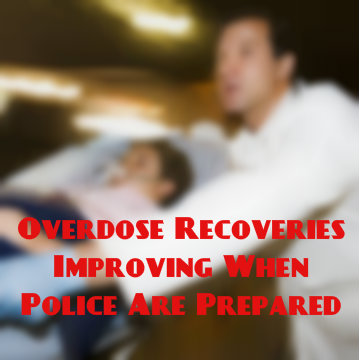 They discovered a range of personal attitudes among police officers toward drug users, as well as confusion about what treatment police officers are expected and authorized to perform at the scene of drug-related emergencies. Many police officers are equipped only with basic first aid and CPR training, and can do little to save the life of an overdose victim in critical condition.
They discovered a range of personal attitudes among police officers toward drug users, as well as confusion about what treatment police officers are expected and authorized to perform at the scene of drug-related emergencies. Many police officers are equipped only with basic first aid and CPR training, and can do little to save the life of an overdose victim in critical condition.
Some police officers revealed negative attitudes about people who use drugs, particularly repeat offenders. Others were empathetic toward those suffering from drug addiction but also expressed frustration with the lack of comprehensive treatment and other resources for drug addicts. Quite a few believed that the cycle of addiction had a significant negative impact on the individuals in their community as well as on the community as a whole. Many police officers in the study also revealed frustration about the limited training and resources they themselves have when responding to an overdose scene.
Frustration with the growing problem of prescription drug abuse and overdose is understandable. In 2010, more than 8.76 million people reported abusing prescription medicine, and in 2008, there were more than 36,000 deaths from drug overdoses, most of those caused by prescription drugs. In fact, prescription painkillers in the form of opioids are responsible for three quarters of all overdoses from prescription medications. Cocaine and heroin combined resulted in fewer overdose deaths than prescription opioids.
Giving Police Officers Tools And Training For Overdose
In some communities around the country, police officers and other responders are given Naloxone, which is the standard drug overdose antidote used by paramedics. Naloxone helps to reverse the effects of prescription opioids and to restore breathing for people in respiratory arrest. The current White House Office of National Drug Control Policy supports training more responders in the use of this tool and making it available to those in a position to be first medical responders.
The responses in the Rhode Island Hospital study suggest that police officers will be more effective in the role of first responders with increased training and improved understanding of their responsibilities. In more rural areas, police officers may be the only trained medical responders who are able to get to overdose victims during the critical window when Naloxone or other treatment methods are most likely to be effective.
Further empowering police officers to be more effective responders may also help to improve the relationship between law enforcement and the community in many areas. It may relieve some feelings of frustration and helplessness on the part of police officers by allowing them to have a more active role in saving lives. It may also improve community views on law enforcement when officers at the scene are able to administer life-saving aid. Some of the police officers interviewed during this study felt that the ability to administer Naloxone could be a critical element in positive police-community relations.
Read More About ER Visits Rising Due To Drug Use
05 Mar 2014
FDA Announces Plans To Limit Acetaminophen Use
The Food and Drug Administration (FDA) has asked healthcare professionals to stop prescribing high doses of the painkiller acetaminophen, which is used in Tylenol, Vicodin and Percocet.
The FDA hopes to reduce liver damage in patients taking high doses. Because many drugs contain acetaminophen, the chances of an inadvertent overdose for someone taking several different prescriptions are likely and very dangerous. Acetaminophen overdose is the leading cause of acute liver failure.
How Drug Makers And Pharmacists Will Be Affected
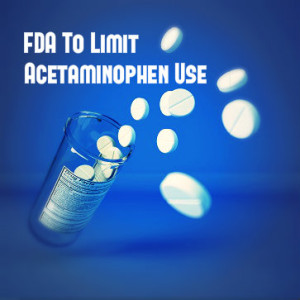 Drug makers are also being asked to consider limiting the amount of acetaminophen in prescription drugs to 325 milligrams or less per pill. Over half of drug makers have agreed. Another step the FDA has taken is recommending pharmacists who receive multiple prescriptions from doctors that, when combined, contain more than 325mg of acetaminophen per dose, contact the doctor who prescribed it and discuss other options.
Drug makers are also being asked to consider limiting the amount of acetaminophen in prescription drugs to 325 milligrams or less per pill. Over half of drug makers have agreed. Another step the FDA has taken is recommending pharmacists who receive multiple prescriptions from doctors that, when combined, contain more than 325mg of acetaminophen per dose, contact the doctor who prescribed it and discuss other options.
Are Over The Counter Drugs Included In FDA’s Limit Of Acetaminophen?
The FDA is also attempting to make drug makers take any drugs containing more than 325 mg of acetaminophen off the market. The warning issued by the FDA does not apply to Tylenol and other over the counter drugs… for now.
Acetaminophen And Alcohol – Dangerous Combination
The FDA explained there is no available data to show that more than 325 mg of acetaminophen provides additional benefits, but it does increase the risk of liver problems. When combined with alcohol, the effects of acetaminophen are even more dangerous. They also report that acetaminophen has been known to cause life-threatening skin reactions, including blisters, serious rashes and the detachment of the upper surface of the skin.
Preventing Acetaminophen Overdose
To decrease chances of overdose, individuals taking pain medications and other medications should read the labels of their prescriptions. The FDA maximum recommendation for adults is no more than 4,000 mg of acetaminophen a day.
Read More On The FDA Urges Public To Beware Of Phony Adderall Sold On The Internet
On Jan. 1, 2014, legal recreational marijuana sales began in Colorado, with remarkably little fuss. Long lines appeared at the 37 stores across the state—mostly in the Denver area—that were fully licensed in time for the New Year, but any worries that the crowds might become disorderly proved to be unfounded.
Law enforcement was a major presence around the newly licensed establishments throughout the day to ensure that the crowds did not get out of hand, and to check the establishments for compliance. Stores selling marijuana must check IDs to ensure each customer is 21 years of age or older, and to determine each customer’s state of residence. Under the new laws, Colorado residents are permitted to buy up to one ounce of marijuana, while out-of-state customers are permitted to buy up to one-quarter of an ounce.
Setting The Precedent Of Legalizing Marijuana
 Colorado is not just the first U.S. state to legalize the sale of recreational marijuana—it is the first state or city anywhere in the world to open stores officially licensed to sell recreational marijuana. Both Colorado and Washington voted to legalize marijuana in the November elections of 2012, but Washington stores will not begin selling recreational marijuana until later in 2014.
Colorado is not just the first U.S. state to legalize the sale of recreational marijuana—it is the first state or city anywhere in the world to open stores officially licensed to sell recreational marijuana. Both Colorado and Washington voted to legalize marijuana in the November elections of 2012, but Washington stores will not begin selling recreational marijuana until later in 2014.
As the months and years pass, Colorado will be the vanguard in other ways as well. The rest of the U.S. will be looking to Colorado to evaluate the success of the state’s regulatory measures that are designed to restrict marijuana sales to licensed establishments, and restrict marijuana purchases to people of legal age. Federal and state officials will be watching to see what effects marijuana legalization has on marijuana abuse and dependence, on underage use of marijuana and on the suddenly legitimate marijuana industry.
Some opponents of the legalization of marijuana fear that the marijuana industry could become a second “Big Tobacco”—an industry that earns huge profits by causing people to become addicted to their products.
Legalized Marijuana Prices
On Jan. 1st, most stores were charging $30 to $50 for an eighth of an ounce of marijuana, although some were charging slightly more. This is significantly higher than the price of legal marijuana in Colorado at the more than 300 dispensaries licensed to sell marijuana for medical purposes to people with a prescription.
Some stores had raised their prices for opening day, and others limited purchases to smaller amounts than the law’s limit for fear of running out of stock. Average prices may drop after the first months of sales and as the stores react to the market. However, legal buyers will still have to deal with an expense that has never before factored into recreational marijuana sales: taxes. Colorado has placed a 15 percent excise tax and a 10 percent sales tax on marijuana purchases, for a total of 25 percent of the cost of the purchase.
Some early customers did express dismay over the prices, and compared them negatively to the cost of purchasing marijuana from non-licensed sources. Even so, sales at the 37 stores across Colorado totaled more than $1 million on New Year’s Day alone, and more than $5 million in the first week.
Colorado has estimated that the marijuana industry could generate around $600 million in sales per year. The state expects to collect around $70 million in taxes from these sales.
Unique Challenges For Marijuana Retailers
While the new marijuana retailers were buoyed by the early sales, there are still many challenges for those in the legal marijuana business. Although the U.S. Department of Justice has decided not to interfere with recreational marijuana sales in Colorado and Washington, these retailers are still impacted by the federal ban on recreational marijuana sales.
Marijuana retailers are not able to get traditional services from banks (who fear criminal proceedings for money laundering), and do not qualify for federal tax write-offs that assist many small business. Furthermore, many establishments are limited to cash transactions because they are not able to accept credit cards. This can make them more vulnerable to robbery, and can make it more challenging to file taxes and manage the employee payroll.
Learn About The Pros And Cons Of Legalizing Marijuana


